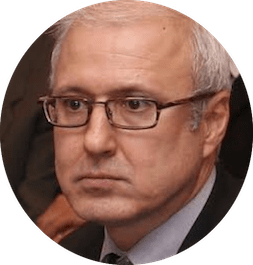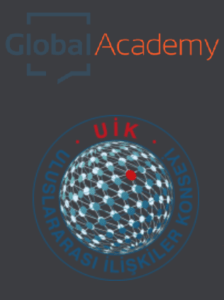
Dynamics of the Big Picture
The new millennium started with great hopes but given present circumstances we proceed toward a total disorder at the global stage. It has become increasingly challenging both academically and policy-wise to take the ‘rule-based international system’ as a reference point anymore. The Russian occupation and annexation of Crimea in 2014 put a big dent in the global security landscape. In February 2022 when Russia launched its second wave of military assault on Ukraine, the second nail was put on the coffin of the global order. More recently, the attack by Hamas on the 7th October 2023 against Israel and Israel’s response to that violated the fundamentals of international law, including humanitarian law and law of war, further widened the dismal state of international relations.
Absent the rules generated since the end of the II. World War as a result of Russian aggression against Ukraine and Israeli assault on Palestine coupled with strong proclivity toward de-globalisation, the international stage has been falling in a chaotic stage and replete with uncertainties. Many analysts do dare elaborating the evolving security environment in terms of new poles of power taking the center stage and share their views on the “Brave New World”. The fundamental question of how to re-calibrate the existing rules or establish new ones to govern the global security order is by and large shunned and rarely addressed in satisfactory terms. There is indeed an entirely new geopolitical and geostrategic landscape with which all international actors must deal. The imminent future seems bleak in many respects giving precedence to power politics in a contested and complex global state of affairs.
This brief description of current international affairs beset by a series of strategic rivalries necessitate more than ever to closely monitor and assess the evolving security order in the ongoing transitional period. Indeed this period signifies indeed an unprecedented watershed moment for almost all international actors. Under present circumstances de-escalating tensions in different theatres and building peace has become more elusive than ever. The systemic rivalry, particularly among the U.S., Russia and China, which puts the global security order under tremendous duress, is proceeding in a multidimensional and multi-domain manner.
Against this backdrop, since 2014 geopolitics premised on competition holds sway over co-operation, thus permeating every walk of international politics. Russia turned out to be an aggressive state, and China is seen by the West as a partner in solving some global issues such as climate crisis, pandemics, and regulation of Artificial Intelligence, but an economic and strategic rival. Leading regional actors are vying to increase the scope of their strategic autonomies, and that surge on their part produces further complications that add further links to competition among great powers.
Connectivity as a Main Driver in International Politics
In the bigger picture of power politics and rivalry, connectivity, in its widest meaning, comes also under sharp focus of geostrategic competition. To put it differently, there also exists geoconnectivity competition added to the geostrategic rivalry.
When China launched its Belt and Road Initiative in 2013, the West at large displayed a somewhat lukewarm attitude and put it by and large into oblivion until it is late for the West to initiate a panoply of schemes to counterbalance the increasing influence of China on a multi-continental basis.
Ambitious it may sound, but Türkiye was the frontrunner in taking the crucial importance of connectivity in its broadest sense on board beginning in the early 1990s and of giving it traction in the 2010s, long before China. Suffice it to say that in October 1998 Bakü-Tbilisi-Ceyhan pipeline project was initiated with the Ankara Declaration signed by Türkiye, the U.S., Azerbaijan, Georgia, Kazakhstan, and Uzbekistan. In that same year in September 1998 the Multilateral Agreement was signed in Baku among twelve International Transport Corridor Europe-Caucasus-Asia (TRACECA) members to help revive the historic Great Silk Road to connect Europe to the South Caucuses and Central Asia. Türkiye launched the project of the Black Sea Ring Corridor in 2003 within Black Sea Economic Cooperation (BSEC) to reinforce sea and land connectivity among its member states.
Finally the Middle Corridor
Coming to the nearer past, Türkiye initiated a project in 2010 designed to enhance connectivity on a regional and international scale dubbed as the Middle Corridor, a term that is now in wide circulation.
Upon Türkiye’s initiative, connectivity was chosen as the main theme for the 3rd. Summit of Turkic Speaking Countries, which later became the Organization of Turkic States, held at Gabala/Azerbaijan in August 2013 before Xi’s announcement of the Belt and Road Initiative in September and October 2013 respectively in Kazakhstan and Indonesia.
The Middle Corridor is an integrated project intended to tie together seaports, airports, railroads, highways, energy lines, and digital networks in the region that extended from Central Asia to Türkiye through the South Caucuses and to Europe. It also entailed the Northern main artery (the container train Viking Project) and the Southern main artery (Türkiye-Israel-Egypt connectivity) to strengthen connectivity in a large belt of geography that are mutually beneficial for European, Middle Eastern and Asian stakeholders. Consequently, the Middle Corridor, as the backbone of connectivity in the East-West direction, is designed to also cover the Northern and Southern axes as its ancillaries reinforcing it in a wider web of connectivity.
The idea behind the Middle Corridor Project has been to prepare conducive grounds for peace, stability and welfare in a broad region and for aligning the interests of regional as well as non-regional actors in a coherent scheme of cooperation.
Baku-Tbilisi-Kars railroad connection, Baku-Tbilisi-Erzurum natural gas pipeline, the Marmaray Project, the Eurasian Tunnel, the third Suspension Bridge (Yavuz Sultan Selim), the Alat seaport near Baku, the Aktau (Kazakhstan) and the Türkmenbaşı (Türkmenistan) seaports with connections to Central Asia via Kyrgyzstan and Uzbekistan have all been the interconnected building blocks of the Middle Corridor.
The U.S. and the EU preferred to reside in their comfort zones until China came into the picture and started to invest heavily in its Belt and Road Initiative that included infrastructure not only in its own region, but extending to Europe. Preserving critical infrastructure vis-à-vis China has then become the main topic in the West, albeit belatedly. Not until June 2021, have we seen any serious attempt on the part of the West to focus on challenges and opportunities involving connectivity. In June 2021 at the G7 Summit in London the U.S. announced its ‘Build Back Better World-B3W’ initiative and the EU launched its ‘Global Gateway Initiative’ of December 2021 on the eve of the Russian attack against Ukraine in February 2022. It could be argued that the announcements of such initiatives are better than never, but we must not forget that a considerable amount of ground has already been lost to China in advancing programs of such magnitude.
It is ironic for those in Türkiye who got involved in the Middle Corridor Project to see their American and European counterparts now discussing the terms such as ‘de-coupling’ or ‘de-risking’ policies in their relations with China defined by the dual track of competition and cooperation, the competition feature being more salient. Under present challenging global circumstances, it would be in the interest of European, Turkish, Caucasian, and Central Asian stakeholders to come together and work out a scheme whereby they attempt to align their interests to carry forward the Middle Corridor in an inclusive manner by keeping the door open, as necessary, to potential non-Middle Corridor partners.
The Middle Corridor is not ‘Made in China’, but launched by Türkiye, the South Caucuses, namely, Azerbaijan and Georgia coupled with Central Asian states. In that respect the Middle Corridor is a different version of Türkiye’s own ‘Belt and Road Initiative.’ What China did in 2013 was to extend the scope and geographical dimension of the Middle Corridor at a time when our Western partners were enjoying a good time of slumber. Nevertheless, given the dire circumstances now plaguing the European security owing to the Russian war in Ukraine and the events that are still evolving in the Middle East due to the Israel-Palestine war, and the growing tension between the U.S. and Iran, including Iran’s proxies, necessitate to prioritize the Middle Corridor by all stakeholders involved with a new impetus.
The Middle Corridor is simply not a network of railroads and highways, but hinges on different tracks of integration, including but not limited to enhancing the Green Transition in the region, notably a catalyst for mobilizing clean and renewable energy resources in the mid-to-long term.
Way Ahead
The Western and some Middle Eastern countries have come with the IMEC (India-Middle East-Europe Corridor) Project at the G20 Summit in September 2023 at New Delhi as an alternative connectivity initiative to the Belt and Road. It could be seen as a good attempt on the part of the initiators, but their hopes have been dashed to a great extent because of the ongoing Israel-Palestine war, thus increasing the level of tension in the wider Middle East. The implications of this war will certainly be long term, which will erect unforeseen barriers in the implementation of the IMEC project. Security both in Europe and the Middle East is fractured, and it will take a long time to heal the wounds of these conflicts in the years to come. That certainly requires a change of mindset open to cooperation while addressing advancing connectivity between Asia and Europe.
The growing prominence of the Middle Corridor should guide the Turkish administration and entrepreneurs to have a cautious approach toward the Türkiye-Iraq Development Road. The Development Road is designed to connecting Türkiye to Basra’s Faw Seaport taking account of actual and potential sources of conflict besieging that particular region. It is a long-term project given the ongoing instability in Iraq and the intricate disputes between Iran and the Western powers. Thus, Türkiye-Iraq connection cannot be a short-medium term project, is not feasible in the context of the current security dynamics there, and should not be seen as an alternative to the Middle Corridor. That said, it might constitute one of the main arteries of the Middle Corridor as its southeastern leg. In that context, it should also be underlined that the building blocks of the Middle Corridor is already in place.
Türkiye’s priority and must be to make the Middle Corridor more functional, preferable, and commercial. It is simply not a land corridor, but intended to connect the Caspian, the Black Sea, and the Mediterranean on a regional scale to the benefit of all involved. It would also be an effective conduit to bring Armenia into the fold of peace, prosperity, and cooperation in the region given the recent encouraging developments to attain lasting peace between Azerbaijan and Armenia.
The moment has come to proceed to expeditiously finalize the remaining conceptual and practical problems involved in putting the Middle Corridor on the agenda of the world and contribute to enhancing peace, stability, prosperity, and cooperation in a wide basin connecting Central Asia, the South Caucuses, and Europe based on an inclusive architecture. This certainly requires all sides to roll up their sleeves and go back to the drawing board to put the final touches on benefitting to the maximum extent from opportunities offered by the Middle Corridor. This Middle Corridor of connectivity represents the only realistic option in view of the conflicts that now prevail in Ukraine and the Middle East. And it is high time to capitalize on those opportunities with renewed vigor.
*This article is based on a presentation by the author delivered at the APC-TEPAV event on 29th. January 2024

Fatih Ceylan, Ambassador (R.)
He was born in 1957 in Bursa. He graduated from Ankara University, Faculty of Political Sciences in 1979. In the same year, he started to work at the Ministry of Foreign Affairs. He received his Master’s Degree from Rutgers(USA)/Princeton Universities. He worked at the Embassy of Islamabad, Consulate General in Deventer and Permanent Representation of Turkey to NATO, Embassy in Brussels and Turkey Mission to the EU. He served as the Consulate General in Düsseldorf and the Ambassador to Sudan and NATO. His last position was Deputy Undersecretary for Bilateral Political Relations. He retired in February 2019.
To cite this work: Fatih Ceylan, “All Roads Now Leading to the Middle Corridor” Panorama, Online, 13 February 2023, https://www.uikpanorama.com/blog/2024/02/13/middle-corridor
Copyright@UIKPanorama. All on-line and print rights reserved. Opinions expressed in works published by the Panorama belongs to the authors alone unless otherwise stated, and do not imply endorsement by the IRCT, Global Academy, or the Editors/Editorial Board of Panorama.

